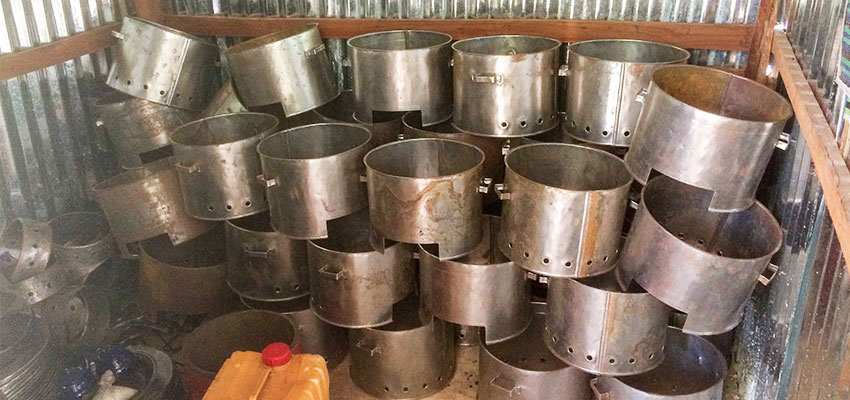
Energy needs assessment in 30 towns and villages in three regions in Mali
Earlier this month, I returned from a three-week trip in Mali to launch an energy needs assessment in partnership with Mercy Corps. This work is part of the D-Lab Energy Research Group's project to develop an assessment toolkit for identifying current energy access, aspirational energy needs, private sector infrastructure, as well as government and nongovernmental programs that are active in the sector.
The goal of these assessments is to provide a framework for D-Lab’s local partners to identify opportunities where increased access to improved energy-related products and technologies can benefit communities. We conducted a pilot of several of these assessment tools with a community-based organization ASAPROSAR in El Salvador this past August. The assessment in Mali was significantly larger, covering 30 towns and villages in three regions.

Working with a Mercy Corps team in Segou
The first week, I worked with the Mercy Corps team in the southern region of Segou. Each day, we began by visiting the mayor of the selected commune to gain permission to conduct research in the area and a specific village. We found that the mayors have a wealth of knowledge about the energy situation and government and NGO programs in the commune. They quickly became our focal point for mapping the stakeholders in the area and identifying individuals at local businesses and civil society organizations for in-depth interviews.
The village chief directed us to individuals to interview about household energy issues. During the first week Mercy Corps staff members Sory and Lamine were trained to conduct the assessment independently. They were both very interested to learn about D-Lab’s process and how various pieces of information gathered in the assessment could contribute to shaping possible programs that Mercy Corps implement.

The rest of the team included surveyors Abdoulaye and Agaichatou, drivers Kodio and Kone, Mercy Corps intern Annie, and translator Abdoul. Annie and Abdoul were conducting interviews and group discussions related to gender issues, which is the topic of Annie’s Master’s thesis at the Heller School for Social Policy and Management at Brandeis University.
Due to security concerns stemming from the conflict in the northern regions of Mali, which began in 2012, only national staff members are cleared for travel to most of the northern regions, where most Mercy Corps offices are located. During the second week, while the data collection team travelled to Mopti to repeat the assessment done in Segou, I returned to Bamako to have meetings with development organizations and private sector manufacturers and distributors of cookstoves and solar power systems.
Analyzing data back in Bamako
For the third week of my trip, the assessment team returned to Bamako, Mali's capitol city, to analyze the data from the first two regions, discuss improvements to the third regional assessment in Tombouctou (that just finished this weekend), and to start to formulate ideas of potential programs that Mercy Corps could pilot.
Looking forward, once all of the data collection and analysis is complete, we will look to initiate pilot programs leveraging existing Mercy Corps programs to address the most critical needs identified, and look for funding to develop larger programs in similar areas.
With input from the Mercy Corps team, I learned a lot about refining the assessment process, particularity how to better streamline the data collection tools and how to better communicate program goals to the local assessment team. This will hopefully reduce reliance on D-Lab support for our future work in this area, making it possible for more organizations to utilize this assessment framework.

Some early results
In the communes and villages surrounding Segou, solar power is the preferred source of electricity, and solar panels were available at shops everywhere. Many households have systems that provide basic lighting and phone charging, but in almost all cases, the installation of the systems is a mess, leading to significant inefficiencies and decreased battery life. The team found that while some residents of Mopti and Tombouctou had access to electricity and solar panels, it was generally less accessible than in Segou.
In Segou, Mopti, and Tombouctou, wood and three stone fires are overwhelmingly the most common form of cooking, with some permanent mud stoves in use. Most cooking is done outdoors, or in well-ventilated rooms separate from the main living quarters, so hopefully the typical health issues related to cooking with biomass are not severe.
Wood is scarce and deforestation of great concern. Fortunately, there is significant awareness of efficient cookstove technology, with people asking for the leading local manufactured cookstove by name. While there are some metal cookstoves in the Mopti region, the team was not able to identify a supplier of high quality, efficient cookstoves in the Mopti region.
We met with two cookstove manufacturers in the capital city, Bamako, and both are currently focusing their sales operations in the regions around Bamako. This presents a clear opportunity for Mercy Corps to develop programs to increase access to efficient cookstove technology. Mercy Corps has programs in entrepreneurship training and support, as well as microfinance programs that could be leveraged to help develop sustainable cookstove businesses.
In this case, potential projects related to electricity are a bit more complicated as there is significant availability of components for solar home systems in rural areas, but there isn't much in the way of quality standards for products or installation. I see the greatest opportunity in the development of programs to promote professionally installed community solar “micro-grids” (for villages on the size of 300-1,000 people), and for providing energy that can run equipment (such as solar water pumps, sewing machines, refrigerators, grain grinders, etc.) that can support economic development.
A more detailed analysis of the data and discussions with Mercy Corp’s team will be required in order to formulate a more concrete project proposal.
Contact
Eric Verploegen, Research Engineer, Food-Water-Energy Lead

